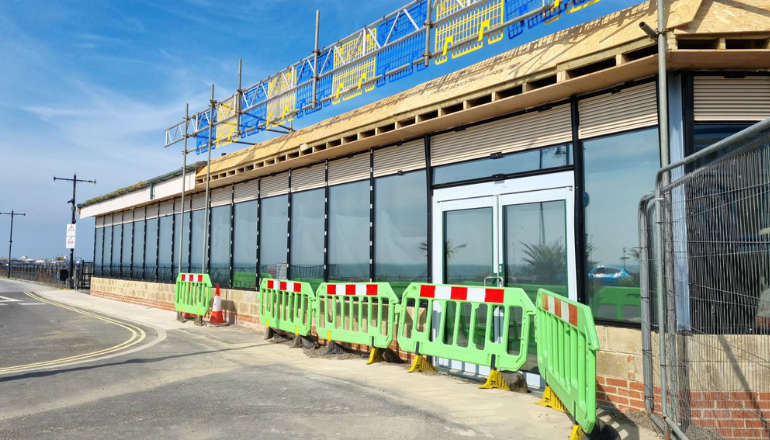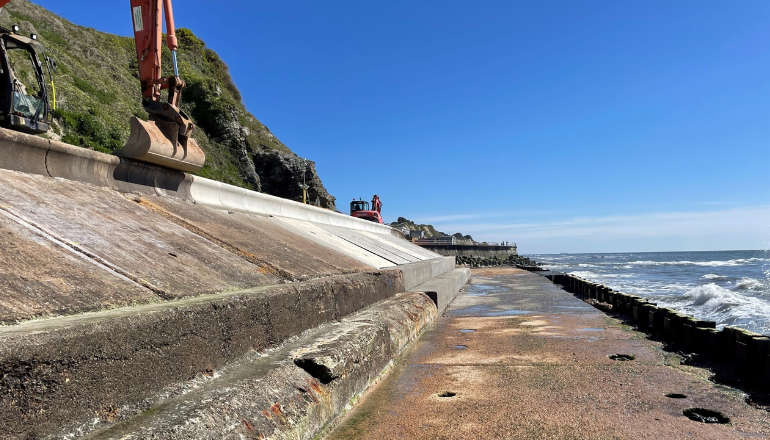
A row over housing figures will come to a head next week as both sides battle over targets that should be set for the Isle of Wight in the next 15 years.
As the draft Island Planning Strategy (DIPS) finally comes before full council — after a year of discussions and extensive public consultation — councillors will make the decision about what happens next.
It would not be the final approval of the plan as more consultation and scrutiny from the government are expected before it could be adopted but the current version has split councillors.
In papers going to full council, it is said cabinet recognises not all councillors agree with all aspects of the plan, and it “may not be perfect”, but it gives the council the best opportunity to get a sound and pragmatic plan in place as quickly as possible.
Opposing the DIPS is cabinet member for strategic finance and transformational change, Cllr Chris Jarman who has put forward a motion which objects to the use of ‘outdated data’ in the plan.
The current figures in the DIPS are based on 2014 predictions, whereas Cllr Jarman and his supporters view this as not accurate and say the council should use data published by the Office for National Statistics (ONS) in the 2021 census and use projections from that.
Cllr Jarman’s motion asks that the annual housing need be recalculated and those figures replace the current ones, with particular emphasis put on the need for housing which is ‘affordable by Islanders’ to rent.
His motion is also calling for extant planning permissions to be completed; unoccupied properties to be renovated; brownfield site housing to be delivered and housing allocations on greenfield sites to be removed.
The council report says it is the view of the “professional planning officers” that such an approach is unlikely to be successful, given the guidance available and extra scrutiny the DIPS would then face.
These are the reasons the council gives for using 2014 figures:
- Government guidance expects authorities to follow the standard method for assessing local need, which uses the 2014 projections, and is based on household numbers, not population figures
- The 2021 census data shows the number of Island households increased by 3,700 in ten years compared to a population growth of 2,100 people so more houses are needed and are influenced by factors like divorce and children moving out of family homes
- If the 2021 census data is used to establish a housing figure, it would mean arguing ‘exceptional circumstances’ so the plan would face a greater level of scrutiny from the Planning Inspectorate and would have a greater chance of being found ‘unsound’
- Changing the data would mean a further delay between 12 and 18 months, while an evidence base is created and the draft reworked, and would also delay other important planning documents, like the waste and minerals strategy which would set policies for the Island on how to deal with fracking and oil exploration applications
- During the delay the council may be subject to further ‘unacceptable’ planning applications which would have to be determined under the tilted balance — which puts the council in a ‘weaker position’ through imposed government sanctions for not hitting the housing targets
- Officers view the current approach — assembling a robust evidence base that demonstrates why the government’s housing target is not deliverable on the Island — has a greater likelihood of success when it reaches the Planning Inspectorate.
- The council’s proposed housing figure of 479 is based upon strong evidence as to why that can be delivered and is considered to be compliant with government guidance
- A housing need based on 70 houses per year would prevent housing being approved and relies on existing planning permissions, empty properties and second/holiday homes to meet all affordable housing needs would be ‘extremely unlikely’ to provide much ‘Island affordable’ housing.
If full council agrees to publish the plan at its October 5 meeting, a further consultation period will start.


 PCC Urges People To Hand In Blades To Curb Knife Crime Epidemic
PCC Urges People To Hand In Blades To Curb Knife Crime Epidemic
 Isle Of Wight Council Signs Tobacco Control Declaration In Commitment To Smoke-Free Future
Isle Of Wight Council Signs Tobacco Control Declaration In Commitment To Smoke-Free Future
 Hoarding Removed From Ryde Interchange To Reveal Smart Glazed Exterior
Hoarding Removed From Ryde Interchange To Reveal Smart Glazed Exterior
 Levelling Up Minister Pays Visit To Isle Of Wight To Address £20m Ryde Investment Plans
Levelling Up Minister Pays Visit To Isle Of Wight To Address £20m Ryde Investment Plans
 HRH The Princess Royal Meets East Wight Primary School Children Learning To Sail In Seaview
HRH The Princess Royal Meets East Wight Primary School Children Learning To Sail In Seaview
 Maritime Units Heading For Isle Of Wight Armed Forces Day
Maritime Units Heading For Isle Of Wight Armed Forces Day
 Funding Boost For Council Chairman's Chosen Charity
Funding Boost For Council Chairman's Chosen Charity
 Medina Way Works In Place This Sunday
Medina Way Works In Place This Sunday
 Islander Georgie To Star On BBC1's Great British Sewing Bee
Islander Georgie To Star On BBC1's Great British Sewing Bee
 Labour's West Wight Candidate Outlines Island Plan
Labour's West Wight Candidate Outlines Island Plan
 Scam Warnings Issued For Isle Of Wight
Scam Warnings Issued For Isle Of Wight
 Islanders Invited To Take Part In Charity Fire Walk For St Catherine’s
Islanders Invited To Take Part In Charity Fire Walk For St Catherine’s
 New Company To Bid For Digital Radio Licence On The Isle Of Wight
New Company To Bid For Digital Radio Licence On The Isle Of Wight
 Police Respond To Anti-Social Behaviour Involving Electric Motorbikes In Puckpool
Police Respond To Anti-Social Behaviour Involving Electric Motorbikes In Puckpool
 New Records Set Following ‘Extraordinary’ Walk The Wight
New Records Set Following ‘Extraordinary’ Walk The Wight
 Appeal Launched Following Ryde Cashpoint Theft
Appeal Launched Following Ryde Cashpoint Theft
 Islanders Urged To Make Sure They're 'Emergency Ready'
Islanders Urged To Make Sure They're 'Emergency Ready'
 Cast Your Vote For New Sea Defence Scheme To Win People's Choice Award
Cast Your Vote For New Sea Defence Scheme To Win People's Choice Award
 Operation Sceptre - A Number Of Surrender Bins Across Isle Of Wight
Operation Sceptre - A Number Of Surrender Bins Across Isle Of Wight
 Man Jailed For Ryde Burglary And Knife Offences
Man Jailed For Ryde Burglary And Knife Offences


